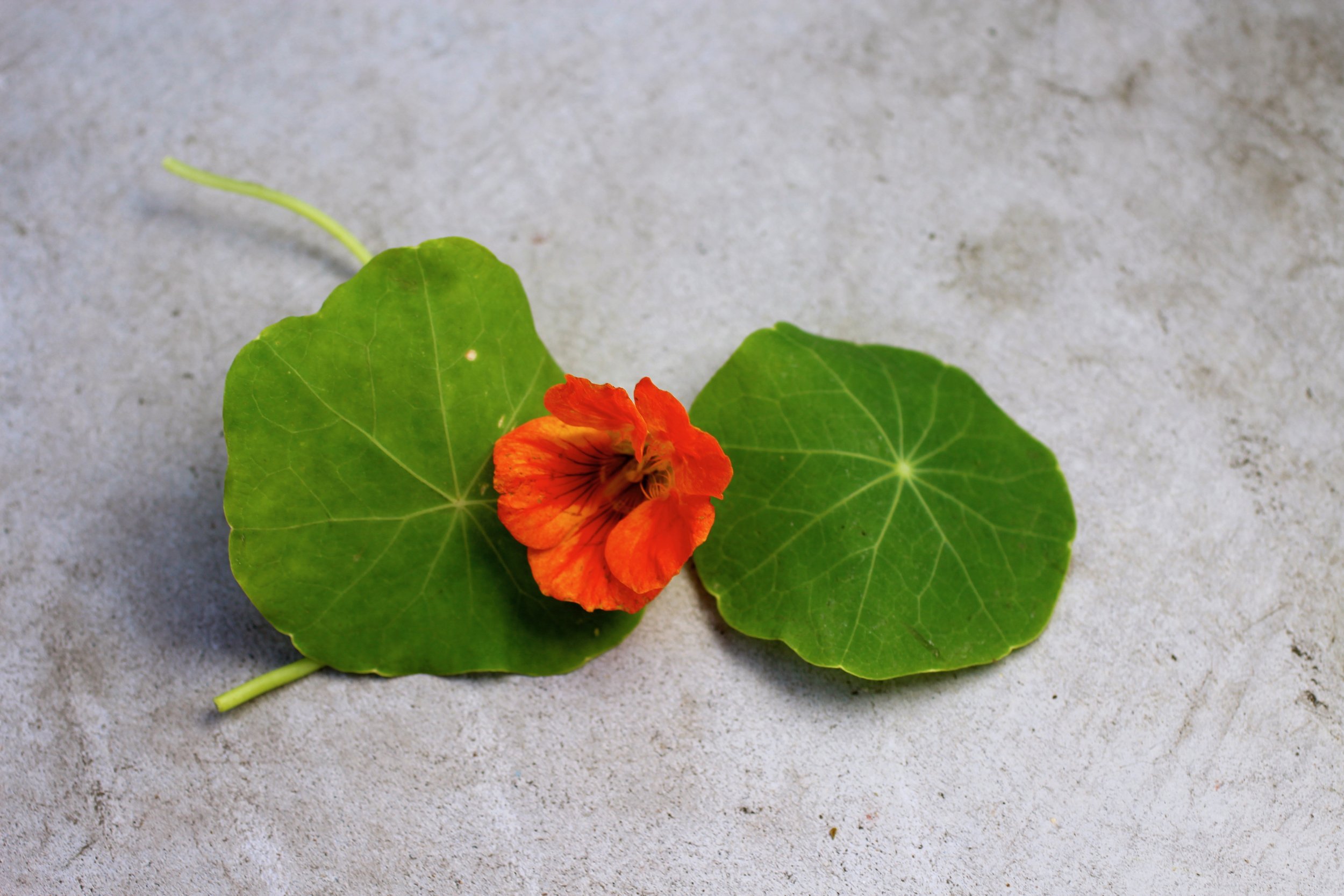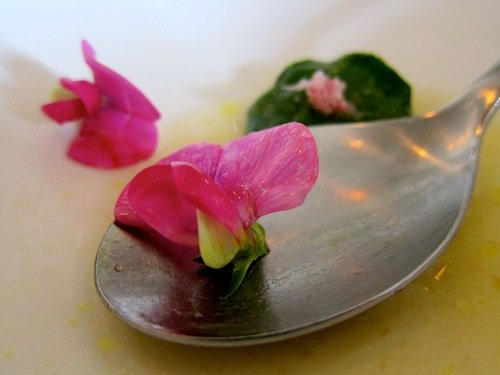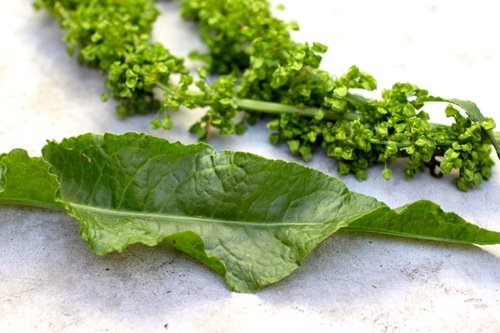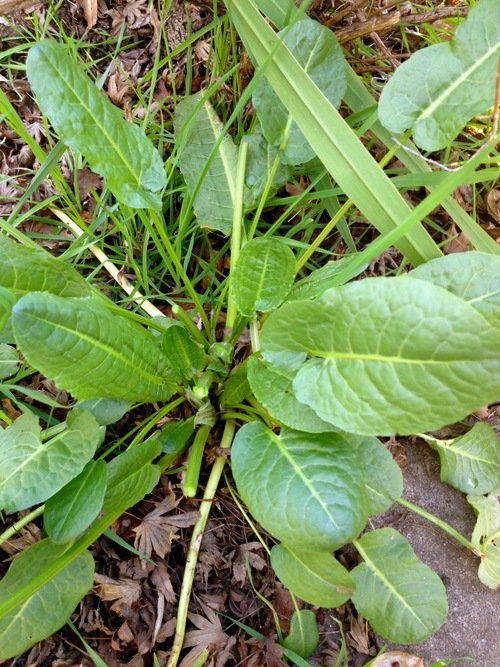Nasturtium: So much more than a (pervasive) flower
Nasturtium mezcal margaritas: An impromptu preparation for an outdoor happy hour.
Nasturtium (Tropaeolum majus) grows everywhere - everywhere - in the Bay Area as well as many other parts of the country. It flourishes in parks, gardens, and along sidewalks pretty much year-round, except when it gets very cold or very dry. The plant is sprawling and iconic - even if you do not immediately know what I am talking about, you have probably seen nasturtium many times or perhaps tasted the flowers in a salad mix from the farmers' market or restaurant. The flowers are bright orange, yellow, or sometimes red with five petals on a single stem and leaves that look similar to lily pads, but thinner. The plant comes by way of South America and my guess is that it was transported here because it is so visually appealing, grows easily, and has a tasty, unique flavor.
What I love about the nasturtium plant is that with its mustard/radish/wasabi-like flavor and cheerfully spunky appearance, it is very approachable for even the biggest wild food skeptic (as long as said skeptic doesn't have an aversion to pungency). However, when you dig a little deeper, there are so many more possibilities than just using the fresh flower as a garnish or in salads. The leaves have a slightly thick, viscous quality to them, similar to okra, but I the sharp flavor cuts this a bit and the viscosity is helpful when you want to thicken a dish, such as a risotto or stew.
Freshly picked nasturtium seed pods
Sweet pea flowers in foreground, baby nasturtium leaves in background wrapping shrimp (wish I got a better photo of the nasturtium!), rhubarb broth.
My first close and consistent experience with nasturtium was when I worked in a restaurant that used the flower to garnish mezza platters (hummus, tapenade, etc.). Being me, I would often grab a bunch of the leftover stems and take a big bite for a peppery "jolt" to keep me going throughout the night. On the other (more calculated) end of the spectrum, in the past few years I have been using the flowers in cocktails and experimenting with the leaves (either fresh in a salad or lightly cooked) and seed pods (pickling them is amazing - check out this recipe for California capers) Baby nasturtium flowers even made their way to the Noma menu when I had the opportunity to eat there and nasturtium pesto is a regular staple on the ForageSF Wild Kitchen dinners, or at least it was the few times I helped out.
Dock: Come for the leaves, stay for the seeds
Rumex crispus, or "curly dock" leaf and seeds.
Young dock leaves.
Dock, or Rumex spp. is so ubiquitous on the West Coast in the spring and summer that even if you aren't looking for it, you have probably seen it. Dock has lance-shaped, elliptical leaves that start out small and tender, but can grow quite large and tough and begin to turn yellow and/or red as they age. The two most common varieties are curly dock, Rumex crispus (pictured in this post, also known as yellow dock), and broad-leafed dock, which have characteristics that befit their names.
The leaves have a lemony taste to them that works well in a salad when they're small and tender, but are better wilted or sautéed when older and tougher. Try topping a bed of dock leaves with warm gnocchi or freshly grilled meat or adding a handful of dock leaves to a soup. A member of the buckwheat family, Polygonacaae, the seeds are similar to buckwheat seeds but not as hard. When toasted, the seeds have a slightly tart-nutty flavor similar to rye, look kind of like ants (really), and can be used in everything from granola to crackers (what I like to call, Rumex crisps) to a more realistic "ants on a log".
Dock likes to grow in urban environments - think empty lots, next to sidewalks, etc. The leaves can be found in the spring and they start to go to seed in the early summer. Even if you find dock that has gone to seed, doesn't mean that there aren't young plants still out there - the seeds will appear earlier for plants that have more sun exposure. You can eat the seeds raw, but they're much better toasted (in my opinion). Here's a recipe for toasting the seeds.
Run fingers down stem to pull off seeds. You may need to run fingers down separate smaller stems if seeds do not come off immediately.
Heat cast iron to medium-high. Add seeds and, stirring frequently, toast until they brown and give off a nutty smell, about 10 minutes. Only add seeds so that they are less than 1/4-inch up the side of the cast iron pan or less.
You are now ready to eat the seeds as a snack or use them in a recipe, such as Rumex Crisps, dock seed crackers.
Dock leaves and seeds in an array of other wild edible plants - can you find the it?









